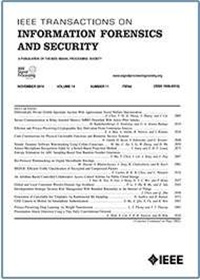基于动态图学习的以太坊细粒度和类增量恶意账户检测
IF 8
1区 计算机科学
Q1 COMPUTER SCIENCE, THEORY & METHODS
IEEE Transactions on Information Forensics and Security
Pub Date : 2025-09-19
DOI:10.1109/TIFS.2025.3612194
引用次数: 0
摘要
以太坊是Web 3.0中价值转移的基石,为全球连接提供了去中心化和高效的信任机制。然而,以太坊的匿名性削弱了市场监管能力,导致庞氏骗局、洗钱和网络钓鱼等恶意行为频发。因此,面对多样化且不断涌现的恶意行为,实施细粒度检测对于维持区块链生态系统的繁荣发展至关重要。本文提出了一种基于动态图学习的细粒度类增量恶意账户检测框架FiMAD。具体来说,我们首先提出了一种称为动态账户关系图(DARG)的通用图结构,它从连续时间的角度对以太坊账户进行动态建模。然后,我们设计了一种级联图特征提取方法来捕获DARG中的深层时间演化模式和相邻交互特征。接下来,我们构建了一个预训练通用编码器,将账户特征转换为高维嵌入,然后使用少量标记样本对模型分类器进行微调,从而实现精确的细粒度检测和增量类的快速更新。我们使用真实的以太坊数据进行了广泛的实验。结果表明,在五个典型场景中,FiMAD在细粒度检测方面优于最先进的(SOTA)方法:类增量、完整数据、新的恶意帐户、不平衡数据和二进制分类。在类增量场景中,与SOTA方法相比,FiMAD将Macro-F1提高了26.4%。本文章由计算机程序翻译,如有差异,请以英文原文为准。
Fine-Grained and Class-Incremental Malicious Account Detection in Ethereum via Dynamic Graph Learning
Ethereum serves as the cornerstone for value transfer in Web 3.0, providing a decentralized and efficient trust mechanism for global connectivity. However, the anonymity of Ethereum undermines market regulatory capabilities, leading to frequent malicious behaviors such as Ponzi Scheme, Money Laundering, and Phishing. Therefore, in the face of the diverse and continuously emerging malicious behaviors, implementing fine-grained detection is crucial for maintaining the prosperous development of the blockchain ecosystem. In this paper, we propose FiMAD, a fine-grained and class-incremental malicious account detection framework based on dynamic graph learning. Specifically, we first propose a general graph structure called Dynamic Account Relation Graph (DARG), which dynamically models Ethereum accounts from a continuous-time perspective. Then, we design a cascade graph feature extraction method to capture deep temporal evolution patterns and neighbor interaction features in DARG. Next, we construct a pre-training universal encoder to transform account features into high-dimensional embeddings, followed by fine-tuning the model classifier with a few labeled samples, enabling accurate fine-grained detection and rapid updates for incremental classes. We conduct extensive experiments using real Ethereum data. The results demonstrate that FiMAD outperforms state-of-the-art (SOTA) methods in fine-grained detection across five typical scenarios: class-incremental, full data, new malicious accounts, imbalanced data, and binary classification. In the class-incremental scenario, FiMAD improves the Macro-F1 by up to 26.4% compared to SOTA methods.
求助全文
通过发布文献求助,成功后即可免费获取论文全文。
去求助
来源期刊

IEEE Transactions on Information Forensics and Security
工程技术-工程:电子与电气
CiteScore
14.40
自引率
7.40%
发文量
234
审稿时长
6.5 months
期刊介绍:
The IEEE Transactions on Information Forensics and Security covers the sciences, technologies, and applications relating to information forensics, information security, biometrics, surveillance and systems applications that incorporate these features
 求助内容:
求助内容: 应助结果提醒方式:
应助结果提醒方式:


